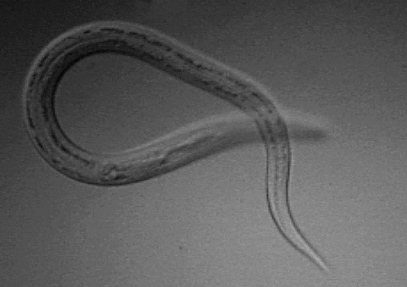Some
suffering patients have taken this idea to the extreme, and have deliberately
infected themselves with parasites to try to alleviate their symptoms. Although
this treatment is highly experimental and there is not a lot of clinical data
demonstrating efficacy, anecdotal
evidence suggests that some patients have observed marked reduction in
symptoms following “helminthic
therapy.” Obviously, there are many problems associated with introducing
parasitic organisms into people, so if scientists can determine how helminthic
infection tamps down inflammatory responses, it could potentially lead to novel
anti-inflammatory treatments that don’t involve the parasites themselves.
At
the core of this issue are two major categories of immune responses, named
“Th1” and “Th2” responses for the types of helper T cells that
facilitate them. Th1 responses are inflammatory in nature, and involve the
activation of macrophages and killer (CD8+) T cells. These responses are
elicited by the secreted cytokine interferon-γ
(IFN-γ), and typically target
intracellular pathogens such as viruses. Th2 responses are mediated largely by
B cells, which make antibodies, and are elicited by the cytokine interleukin-4
(IL-4). Th2 responses target extracellular pathogens, such as parasitic worms,
and the rationale behind the hygiene hypothesis is that by eliminating many of
these Th2 pathogens, the immune system “skews” towards Th1 responses. This,
then, leads to increased inflammation and the associated autoinflammatory
diseases. However, other responses caused by helminth infection, including the
generation of regulatory
T cells (TRegs) and the secretion of immunomodulatory cytokines
such as IL-10 and transforming growth factor-β
(TGF-β), might also mitigate
autoinflammatory disease. A recent paper by Hübner et al attempted to
distinguish which of these mechanisms was responsible for the protection from
autoimmunity accorded by helminth infection. They found that generation of a
Th2 response was not required, but that the production of TGF-β was largely responsible
for protection.
The
system that Hübner and colleagues used was the non-obese diabetic (NOD) mouse,
a model for type 1 (autoimmune) diabetes. These mice spontaneously develop
diabetes between 4-6 months of age.
Hübner et al had previously demonstrated that infecting NOD mice with a
helminthic worm, Litomosoides sigmodontis, prevents onset of diabetes (2), and now examined the mechanism for
this protection. To do this, they crossed NOD mice with mice that genetically
lacked IL-4, the key cytokine for development of a Th2 response. The
IL-4-deficient NOD mice did not exhibit a Th2 skewing following L. sigmodontis infection, either in
cytokine production or the type of antibodies produced. However, despite the
lack of a Th2 response, none of these mice developed diabetes, indicating that
Th2-skewing is not the primary mechanism of protection.
The
authors then examined other possible mechanisms of protection. They examined
levels of TRegs in IL-4-competent and –deficient NOD mice following L. sigmodontis infection, and found that
while infection did increase the number and activity of these cells, there was
no difference in the presence or absence of IL-4. Using antibody depletion and adoptive transfer
experiments, the authors did not observe a strong role for TRegs in
the helminth-mediated suppression of autoimmunity, although this data was not as
robust. Another possibility is that helminth infection decreases a Th17
response, a third “flavor” of immune response that has been linked to
autoimmunity. However, the authors did not observe a decrease in the production
of IL-17, a hallmark of the Th17 response, upon L. sigmodontis infection, suggesting that this, too, was not a
factor. Finally, the authors examined production of the immunomodulatory
cytokines IL-10 and TGF-β. Helminth infection did not lead to
increased levels of IL-10, although lower levels were observed in the absence
of IL-4. However, L. sigmodontis did
induce higher levels of bioactive (blood-borne) TGF-β, and depletion of TGF-β led to an increase in diabetes onset
in the presence of helminth infection. These results suggest that the
protection against autoimmunity accorded by helminth infection is not due to a
Th2 skewing, but to an increase in the production of TGF-β These
results are intriguing, but a lot more work must be done to fully understand
how helminths might alter autoimmune disease. If similar effects are observed
in other models of autoimmune/autoinflammatory disease, and with other
infectious parasites, it could indicate that the same benefits of helminthic
therapy could be achieved merely by treating patients with TGF-β. Intriguingly, TGF-β has been shown to play a role in
suppressing type 1 diabetes in another mouse model (3), indicating that it may
be a central anti-inflammatory factor. It is known that TGF-β can help maintain TReg populations, and can counteract
the effects of the inflammatory cytokines tumor necrosis factor-alpha (TNF-α) and lymphotoxin (LT) (reviewed in 4). However, TGF-β can also facilitate the production of
inflammatory Th17 cells and lead to fibrotic diseases, and is also associated
with some forms of cancer, so it may not be the ideal therapeutic.
Nevertheless, further research into the functions of TGF-β may provide some hope for those who suffer from autoinflammatory
diseases, without their needing to be infected with parasites!
Primary Article:
Hübner MP,
Shi Y, Torrero MN, Mueller E, Larson D, Soloviova K, Gondorf F, Hoerauf A,
Killoran KE, Stocker JT, Davies SJ, Tarbell KV, Mitre E. 2012. Helminth
Protection against Autoimmune Diabetes in Nonobese Diabetic Mice Is Independent
of a Type 2 Immune Shift and Requires TGF-β. J Immunol. 188:559-68.
Other References:
(2) Hübner, M. P., J. T. Stocker, and E.
Mitre. 2009. Inhibition
of type 1 diabetes in
filaria-infected
non-obese diabetic mice is associated with a T helper type 2 shift and
induction of Foxp3+ regulatory T cells. Immunology 127: 512–522
(3) Burton,
O. T., P. Zaccone, J. M. Phillips, H. De La Peña, Z. Fehérvári,
M. Azuma,
S. Gibbs, B. Stockinger, and A. Cooke. 2010. Roles for TGF-beta and
programmed cell death 1 ligand 1 in regulatory T cell expansion and diabetes
suppression by
zymosan in nonobese diabetic mice. J. Immunol. 185: 2754–2762.
(4) Mirshafiey A, and Mohsenzadegan M. 2009 TGF-beta as a promising option
in the treatment of multiple sclerosis. Neuropharmacology.
56:929-36.

No comments:
Post a Comment